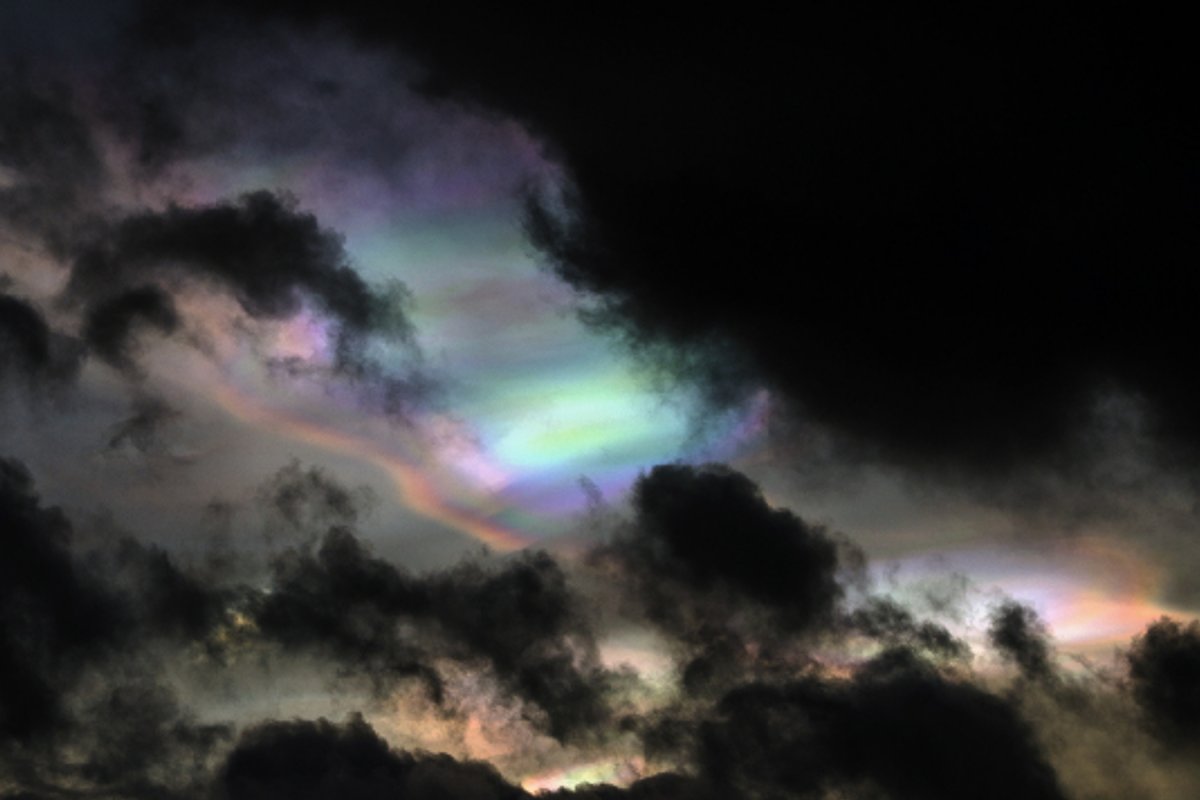Bizarre, beautiful clouds—known as mother-of-pearl clouds because they resemble the inside of a pearl oyster shell—have been caught on camera high in the sky over Norway. These polar stratospheric clouds were photographed by Norwegian photographer Fredrik Broms from Kvaløya. "I've been on the lookout for polar stratospheric clouds (PSCs) all winter," Broms told spaceweather.com. "This morning, I caught a split-second glimpse of some really colourful PSCs, and within an hour another gap in the storm clouds revealed a bigger display."
Some of these clouds were exceptionally colorful, including an absolutely stunning greenish cloud surrounded by purple. The appearance of these rare clouds is not only a visual delight but also a phenomenon that captures the scientific community's interest due to their unique formation and implications.
Polar stratospheric clouds are incredibly rare, typically occurring between 49,000 and 82,000 feet in the atmosphere, where moisture is scarce. They form at extremely cold temperatures, below minus 108 degrees Fahrenheit, as trace moisture turns into tiny ice crystals. These clouds create a dazzling light display, particularly during twilight hours when sunlight diffuses through their icy structures.
These stunning displays are often seen only two or three times a year, primarily during winter months, making them a special sight for both photographers and skywatchers alike. As Broms highlights, the fleeting nature of these moments adds to their beauty, as each occurrence may be different, showcasing a range of colors and patterns shaped by the atmosphere's ever-changing conditions.

However, these stunning clouds can have serious implications. According to the U.S. Environmental Protection Agency (EPA), polar stratospheric clouds contribute to the breakdown of the Earth's ozone layer. On the surfaces of these ice crystals, chlorine is catalyzed to react and form ozone-destroying compounds like chlorine monoxide. This reaction is influenced by ultraviolet light from the sun, which can destroy vast amounts of ozone molecules, posing risks to both human health and the environment.
Despite the beauty of these clouds, they highlight a significant environmental challenge. The ozone layer plays a crucial role in protecting the Earth from harmful ultraviolet rays that can lead to skin cancers and other health issues. As such, understanding and monitoring these clouds is vital for environmental scientists and policymakers.
Ultimately, while the sight of mother-of-pearl clouds is a breathtaking natural phenomenon, it serves as a reminder of the delicate balance in our atmosphere and the ongoing efforts needed to protect it.
Understanding Hurricane Seasons: Insights And Impacts
Exploring Education: A Guide To The Most And Least Educated States In The U.S.
Exploring The Phenomenon Of Wordle: A Game Loved By Millions


